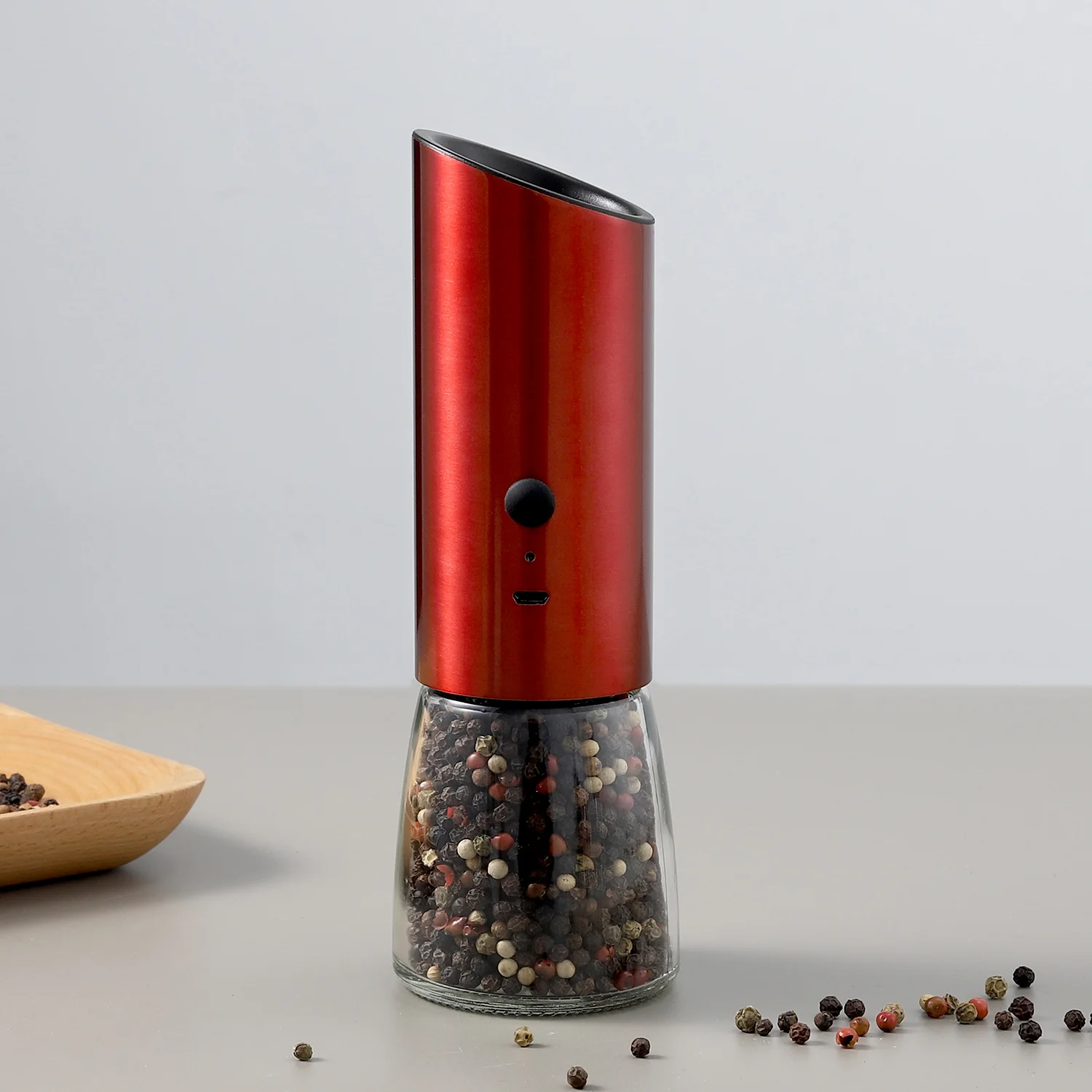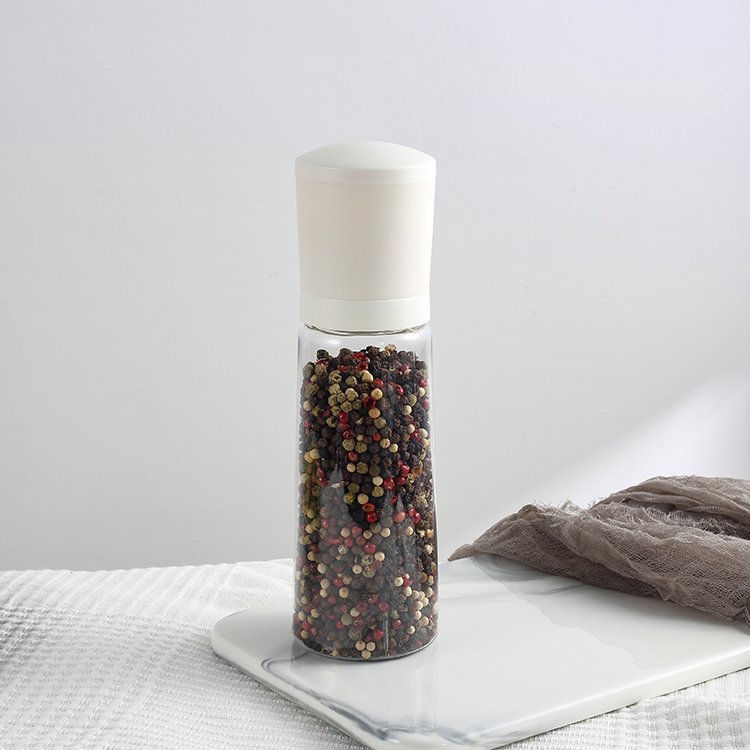
You hold the secret to a long-lasting mini electric burr coffee grinder. Whether you use the best electric portable coffee grinder or the best rechargeable coffee grinder, regular cleaning is the key. Keeping your electric coffee grinder free from old grounds and oil buildup preserves its performance and keeps your coffee tasting fresh.
- Ground coffee loses freshness in just 7 to 14 days.
- Whole beans stay optimal for only 3 to 4 weeks.
Daily Tips to Keep Your Coffee Grinder Clean and Efficient
Following these daily tips to keep your coffee grinder clean will protect your machine and improve your coffee. Small habits make a big difference in performance and longevity.
Grind Fresh for Each Brew
You should grind your coffee beans right before you brew. This simple step is the best way to maximize flavor. Grinding releases the beans’ aromatic oils. Brewing immediately captures these oils in your cup before air exposure causes them to fade.
- Maximum Freshness: You preserve the delicate compounds that create rich flavor and aroma.
- Flavor Control: You can adjust the grind size for your specific brewing method, giving you complete control over the final taste.
Be Mindful of Oily Beans
You need to pay attention to the type of beans you use. Dark roasts like French and Italian roasts are very oily. This oil can create a sticky residue inside your grinder. Over time, this buildup can clog the burrs and strain the motor. Proper grinder cleaning is essential if you prefer these beans.
Many users find that oily beans can cause their grinder to jam. One person noted their electric grinder stopped working completely until they took it apart to clean a coffee grinder and remove the oily buildup.
Listen for Changes in Sound
Your grinder’s sound can tell you a lot. A smooth, consistent whir is normal. If you hear grinding or screaming noises, it often means the motor is struggling. This could signal a clog from coffee residue. A rattling sound might indicate a loose part. These sounds are your cue to stop and clean your grinder.
Use a Bellows or Brush After Use
Get into the habit of a quick daily clean. After each use, a few puffs from a bellows can blow out any leftover grounds. You can also use a narrow brush to clear the grind chamber and chute. This quick routine is a simple way to clean a coffee grinder daily. It prevents old grounds from mixing with your fresh coffee and is a key part of grinder cleaning.
How to Clean a Coffee Grinder: Your Essential Guide

You can master how to clean a coffee grinder with a simple cleaning routine. Regular maintenance protects your grinder’s motor and burrs. It also guarantees every cup of coffee tastes fresh and delicious. This guide covers everything from a quick daily wipe-down to a thorough deep clean.
Your Cleaning Toolkit
You should gather a few essential tools before cleaning a coffee grinder. Having these items ready makes the process fast and effective. You likely have most of these at home already.
| Tool | Purpose |
|---|---|
| Soft-bristle brush | Reaches into tight spaces to remove grounds. |
| Microfiber cloth | Wipes away fine coffee dust without scratching. |
| Bellows (optional) | Puffs air to blow out stubborn grounds. |
| Wooden skewer or toothpick | Dislodges packed-in grounds from crevices. |
| Grinder cleaning tablets | A powerful coffee grinder cleaner for absorbing oils. |
The Quick Clean (Daily)
You can perform a quick clean in just a few minutes after each use. This simple habit prevents the buildup of old grounds. Here is how to clean a coffee grinder quickly and safely.
- Ensure Safety: You must first turn off and unplug your grinder. Safety is always the first step.
- Disassemble: You can carefully take out the hopper and grounds bin. These are the main removable parts you will handle daily.
- Brush Away Grounds: Use your soft brush to sweep out leftover grounds from the burrs and chute. Focus on areas where coffee dust collects.
- Wipe Surfaces: Take a dry microfiber cloth to wipe down all the removable parts and the grinder’s exterior. This removes any fine dust.
- Reassemble: You can put the dry, clean removable parts back onto the grinder. It is now ready for your next brew.
The Deep Clean (Weekly/Bi-Weekly)
You will need to deep clean your grinder periodically to remove stubborn coffee oils and fine particles. This deep cleaning guide will help you restore your machine to peak condition. You should perform a deep clean if you notice any of these signs:
- Your coffee tastes stale or bitter.
- The grinder makes unusual straining sounds.
- You see visible, sticky residue around the burrs.
- It becomes difficult to adjust your grind settings.
- You are switching from an oily dark roast to a delicate light roast.
For most users, a monthly deep clean is sufficient. If you use very oily beans or grind for espresso daily, you may need to clean your grinder every two weeks. The process for cleaning a coffee grinder thoroughly involves taking it apart. You will need to remove the outer burr to access the grinding chamber.
Note: Always check your grinder’s manual for specific instructions on how to disassemble the burrs and other removable parts. Each model is slightly different.
Once you access the inner chamber, use your brush and a wooden skewer to scrub away all the caked-on grounds and oil residue. Wipe every surface clean before reassembling. This level of grinder cleaning ensures your machine runs smoothly.
Using Grinder Cleaning Tablets
You can use a coffee grinder cleaner for an even easier deep clean. Grinder cleaning tablets are a fantastic tool for this job. These tablets are made from all-natural, food-safe, and biodegradable ingredients. They do not contain harmful phosphates.
The tablets work by absorbing and loosening coffee oils and residue as they pass through the burrs. Using them is simple. You just run a small amount of the tablets through the grinder like they are coffee beans. Afterward, you grind a small batch of actual coffee beans to clear out any tablet fragments.
Are they safe? Absolutely. The ingredients are edible and flavor-neutral. Any dust or residue left behind is harmless and will not affect the taste of your coffee. This makes grinder cleaning tablets a safe and effective way to clean a coffee grinder and maintain its performance.
Common Mistakes That Can Damage Your Mini Electric Burr Coffee Grinder

You can extend the life of your grinder by avoiding a few common mistakes. These simple errors can cause unnecessary wear and tear on your machine. Protecting your mini electric burr coffee grinder from damage is easy when you know what to avoid.
Never Use Water on the Burrs
You must never use water to clean your grinder’s burrs. Water causes metal burrs, especially those made of steel, to rust almost immediately. Rusted burrs become dull and ineffective, ruining your grind consistency. This damage is often irreversible and can destroy your grinder. Always use a dry brush or grinder cleaning tablets to remove coffee residue.
Don’t Grind Anything But Coffee
You should only grind coffee beans in your grinder. Using it for other items can cause serious problems. Spices, nuts, and other foods can damage the motor and contaminate the flavor of your coffee.
- Flavor Contamination: Strong flavors from spices will linger and transfer to your coffee beans.
- Oil Buildup: Oily nuts can create a sticky residue that clogs the burrs and impairs performance.
- Wear and Tear: Hard items like nuts can accelerate wear on the burrs and strain the motor, shortening the lifespan of your mini electric burr coffee grinder.
Avoid Overfilling the Hopper
You should avoid filling the hopper to the very top. Overfilling the grinder can put unnecessary strain on the motor. The motor has to work harder to pull the beans into the burrs, which can lead to overheating. A full hopper also makes it harder to achieve a consistent grind. For best results, only add the amount of beans you need for your next brew.
Stop Grinding on an Empty Hopper
You should never run your grinder when the hopper is empty. This is called “dry grinding,” and it causes the burrs to spin against each other without any beans to cushion them.
This action creates excess friction and heat, which can dull the burrs and damage the motor over time. Always make sure there are beans in the hopper before you turn your grinder on.
Long-Term Maintenance for Peak Performance
You can ensure your mini electric burr coffee grinder performs well for years. Regular maintenance goes beyond cleaning. It involves checking the core components that deliver a consistent grind. These long-term checks protect your investment and guarantee delicious coffee.
Checking Burr Sharpness
You should inspect your coffee grinder burrs for sharpness over time. New burrs have very defined, sharp cutting edges. Worn burrs feel smoother or rounded to the touch. While this test is subjective, you can feel a noticeable difference. A visual inspection can also reveal dull edges. Sharp burrs are essential for a clean, uniform grind.
When to Replace Your Burrs
You will eventually need to replace your burrs. Manufacturers often provide a recommended lifespan for their designs. You can also watch for clear signs of wear.
- Performance Changes: Your grinder may take longer to grind or sound louder.
- Inconsistent Grounds: You might see more clumps and fine dust in your coffee grounds.
- Taste Issues: Your coffee may start tasting flat, sour, or bitter due to uneven extraction.
The lifespan of burrs depends on their material. Ceramic burrs generally last longer than standard steel ones.
| Burr Type | Lifespan (pounds of coffee) |
|---|---|
| Standard Steel | 500-1000 |
| Ceramic | 1000-1500 |
Checking Burr Alignment
You need to check your burr alignment for optimal performance. Poor alignment creates an inconsistent grind with too many fine particles and large chunks. This unevenness leads to a muddled, unbalanced cup of coffee. A popular method to check this is the “marker test.” You color the edges of the burrs with a dry-erase marker. Then, you run the grinder briefly. If the marker erases evenly, your alignment is good. Uneven erasure indicates a problem. Proper alignment is a key goal for your mini electric burr coffee grinder.
You now hold the secret to your grinder’s long life. Consistent grinder cleaning is the most important habit. You know how to clean a coffee grinder effectively. This routine grinder cleaning protects your machine. You can easily clean a coffee grinder for better coffee flavor and enjoy delicious brews for years to come.
FAQ
How often should you clean your coffee grinder?
You should perform a quick clean after each use. A deep clean is necessary every two to four weeks, depending on the beans you use.
Can you use rice to clean a coffee grinder?
You should never use rice. It is too hard for the motor and burrs. Rice can cause significant damage and may void your grinder’s warranty.
Why must you unplug the grinder before cleaning?
You must unplug your grinder for safety. This action prevents the motor from accidentally starting. It protects your fingers from the sharp burrs during cleaning.






